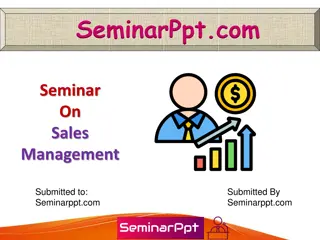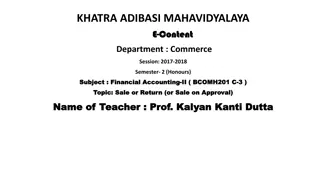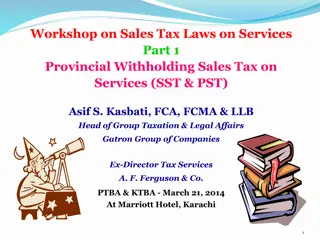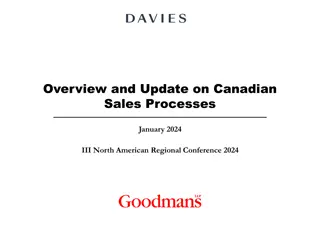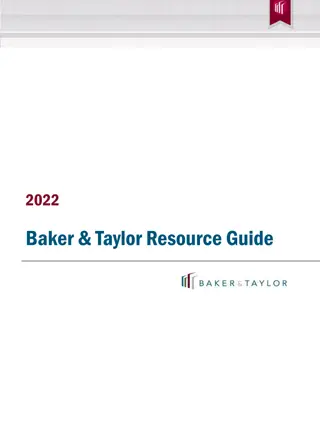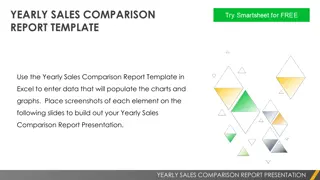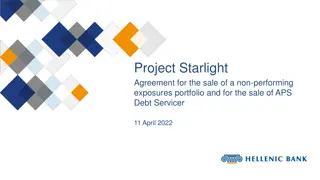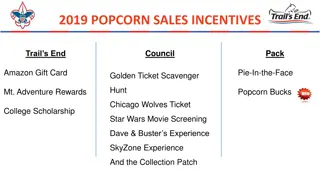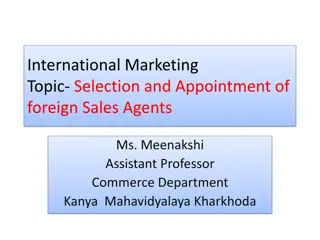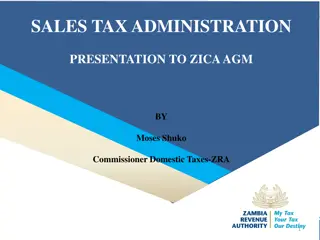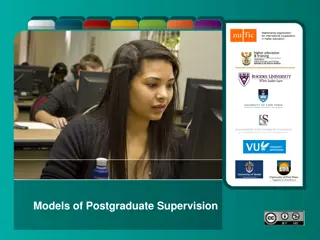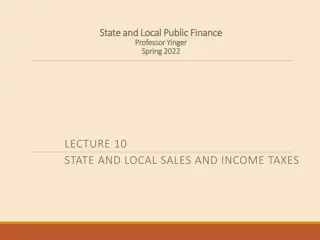Understanding The Challenger Sale - Five Sales Types and Effective Approaches
In "The Challenger Sale," various sales types are discussed, including the Hard Worker, the Challenger, the Lone Wolf, the Reactive Problem Solver, and the Relationship Builder. The key takeaway is that relationships are not always the sole driver of success in sales. Rather, customers seek insights to improve their businesses. The most powerful sales approaches involve teaching, tailoring, and taking control of customer conversations, focusing on differentiation and emotional connection.
Download Presentation

Please find below an Image/Link to download the presentation.
The content on the website is provided AS IS for your information and personal use only. It may not be sold, licensed, or shared on other websites without obtaining consent from the author. Download presentation by click this link. If you encounter any issues during the download, it is possible that the publisher has removed the file from their server.
E N D
Presentation Transcript
Five Sales Types The Hard Worker (21%) The Challenger (27%) The Lone Wolf (18%) The Reactive Problem Solver (14%) The Relationship Builder (21%)
Hard Worker Always willing to go the extra mile Doesn t give up easily Self-motivated Interested in feedback and development
The Challenger Always has a different view of the world Understands the customer s business Loves to debate Pushes the customer
The Lone Wolf Follows own instincts Self-assured Difficult to control
The Reactive Problem Solver Reliably responds to internal and external stakeholders Ensures that all problems are solved Detailed-oriented
The Relationship Builder Builds strong advocates in customer organizations Generous in giving time to help others Gets along with everyone
Relationships are not necessarily the key to success Research from the Corporate Executive Board, as indicated in The Challenger Sale, shows that in the current business environment, customers don t always know what they don t know and crave insights that can help them run their businesses more effectively and efficiently.
The most powerful sales approaching is based on: 1. Teaching 2. Tailoring 3. Taking control of the customer conversation
Teaching for Differentiation Build insights into teaching conversations Don t forget the emotional component of a well-designed teaching pitch Tell a compelling story with real drama and suspense (HBR Guide To Persuasive Presentations)
Six Steps 1. The Warmer - Building credibility by reading prospect s mind, demonstrating empathy, giving new information (Open, Greeting, New Information) 2. Reframe First, reframe an unrecognized problem, need, or assumption (Recap and Purpose) -
3. Rational Drowning Gradual intensification of the problem, both in degree and closeness to the customer (Discussion) - 4. Emotional Impact Psychological features of the problem, or presence in the individual s workflow, humanizing the problem (Discussion based on Emotional Intelligence) -
5. Value Proposition A New Way A new framework for addressing the problem implicitly tied to your value proposition (Discussion) - 6. Your Solution and Implementation Map Map of supplier services or solutions linked back to key teaching points; highlighted path to implementation (Discussion)
Old World: Process Focused New World: Judgment Oriented The customer expresses a defined need QUALIFICATION CRITERIA The customer is in a state of uncertainty Identify a stakeholder with the authority to spend STAKEHOLDER SELECTION Identify a stakeholder who is open to change and can influence decision makers Demonstrate the value your solution provides relative to competitors offerings NATURE OF THE CONVERSATION Disrupt the customer s thinking and assumptions about his/her business 14 Dismantling the Sales Machine, Harvard Business Review, November, 2013
Use This Call Structure Model Greeting New Information Opening Recap and Purpose Discussion and Creating Value Summary and Close
Presenting: Call Structure 1. Greeting Set tone of the meeting and build rapport (The Warmer) 2. New information Provide new, relevant information to enhance your source credibility and expertise. (The Warmer) 3. Opening A well-planned statement to pique interest in your proposal, insights, and solutions (The Warmer) 4. Recap and purpose Recap what challenges and problems you will be addressing, and state the purpose of the call. (Reframe) 16
5. Discussion and Creating Value Move prospects from desire to conviction that your solutions are the best ones. Dealing with objections Conditions Discussion tactics Create Value (Rational Drowning, Emotional Impact, and Value Proposition) 6. Summary and close Summarize key points no more than three and ask for the order. No ask, no order. (Your Solution and Implementation Map) 17



